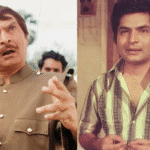DRS and Hawk Eye Explanation in Cricket
Have you ever watched a cricket match and wondered how umpires make those impossibly precise LBW decisions? Or perhaps you’ve questioned a close call, only to see technology reveal what the human eye couldn’t catch? Since 2008, cricket has undergone a technological revolution that has forever changed how the game is officiated and experienced.
The Decision Review System (DRS) and its crown jewel, Hawk-Eye technology, have transformed cricket from a sport reliant solely on human judgment to one where millimeter-precise ball tracking determines crucial outcomes. With an accuracy claimed to be within 2.6 millimeters, these systems have dramatically reduced errors while simultaneously sparking passionate debates about the role of technology in sport. But how exactly do these systems work, and are they truly as infallible as they seem?
In this comprehensive guide, we’ll explore the evolution of DRS from its introduction to international cricket, dive deep into the fascinating workings of Hawk-Eye technology, examine its real-world applications, address the controversies that have emerged, and look beyond decision-making to its broader impact on the sport we love. Whether you’re a cricket purist or technology enthusiast, understanding these innovations offers a new appreciation for the beautiful complexity of modern cricket.
The Evolution of Decision Review System (DRS) in Cricket

History and implementation across cricket formats since 2008
The Decision Review System (DRS) made its official debut in cricket during a 2008 Test series between India and Sri Lanka, marking a significant turning point in cricket officiating. This technology-driven system was developed by the International Cricket Council (ICC) to assist umpires in making more accurate decisions. While the concept of umpire referrals had existed since 1992, the formal DRS introduced the revolutionary player referral mechanism, which was first implemented in a Test match in late 2009.
Initially, the ICC mandated DRS for all international matches, but later shifted to an optional approach requiring mutual agreement between competing teams. Throughout its implementation, the system has undergone several refinements, particularly regarding LBW decisions and the handling of unsuccessful reviews, which can now be reset under specific conditions.
Core purpose: Minimizing human error in umpiring decisions
The fundamental purpose of DRS is to reduce human error in cricket umpiring. The system incorporates multiple technological components to achieve this goal:
- Ball-tracking technology (Hawk-Eye or Virtual Eye) to determine ball trajectory
- Sound analysis tools (Real Time Snicko) to detect edges
- Infrared imaging (Hot Spot) to identify contact points between ball and bat or player
These technologies collectively enable precise evaluation of contentious decisions, particularly for dismissals such as LBW, caught behind, and close boundary calls. Despite its technological sophistication, statistics reveal a mixed success rate for player reviews. Analysis of over 2,100 reviews between 2009 and 2017 showed that only 26% resulted in overturned decisions, with batsmen enjoying a higher success rate (34%) compared to bowlers (20%).
Impact on fairness and transparency in cricket
DRS has significantly influenced fairness and transparency in cricket, though not without controversy. The system has generally been well-received among players and coaches for its ability to correct clear errors. However, its implementation has faced several challenges:
- Opposition from cricket boards, most notably the BCCI (Board of Control for Cricket in India), which maintained a cautious stance toward the technology
- Inconsistent availability across different cricketing nations, particularly in less affluent regions
- Concerns about undermining on-field umpires’ authority
- Incidents where decisions were controversially overturned
Despite these challenges, data suggests that DRS has slightly decreased overall dismissals per match, contrary to initial fears that it would increase wickets. The system continues to evolve, incorporating feedback and technological improvements to enhance cricket’s integrity.
Now that we’ve explored the evolution of the Decision Review System in cricket, let’s examine one of its most crucial components. In the next section, we’ll delve into Understanding Hawk-Eye Technology, exploring how this sophisticated ball-tracking system forms the backbone of modern cricket decision-making.
Understanding Hawk-Eye Technology

Now that we’ve explored the evolution of DRS in cricket, let’s dive into the sophisticated technology that powers much of its decision-making capabilities: Hawk-Eye.
Development and Operational Principles
Hawk-Eye was developed in the UK by Paul Hawkins and launched in 2000 as a sophisticated computer vision system designed to track ball trajectories in sports. Initially implemented in cricket, it made its debut during a Test match between Pakistan and England in 2001, initially for television broadcast purposes before becoming an integral part of decision-making processes like DRS.
The operational principles of Hawk-Eye hinge on triangulation techniques. The system processes visual data from multiple camera feeds to determine the ball’s exact position and predict its interactions with the playing area. This allows officials to make more accurate decisions regarding leg before wicket (LBW) appeals, boundary calls, and other crucial aspects of the game.
Camera System and 3D Trajectory Tracking Capabilities
Hawk-Eye employs six or more high-speed cameras strategically positioned around the cricket field. These computer-linked cameras capture the ball’s movement from multiple angles simultaneously, creating a comprehensive view of its path. Using sophisticated algorithms, the system analyzes these video feeds in real-time to create a three-dimensional reconstruction of the ball’s trajectory.
This 3D tracking capability allows Hawk-Eye to determine critical data points in cricket, including:
- Where the ball pitched
- The exact point where it struck the batsman
- Whether it would have hit the stumps if not intercepted
The system also enhances cricket broadcasts with visual tools such as Wagon Wheels and Pitch Maps, providing viewers with detailed bowling metrics and analysis.
Technical Specifications and Accuracy Metrics
Hawk-Eye boasts impressive technical specifications, claiming an accuracy within 2.6-3.6 millimeters. This precision level is achieved through its advanced camera technology and algorithmic processing. However, this margin of error has become a point of contention in some critical game situations.
Despite its technological sophistication, Hawk-Eye faces criticism regarding its predictive capabilities, particularly for projecting the ball’s future path. Certain variables like pitch conditions can influence the ball’s behavior in ways that might not be fully accounted for by the system.
Competing systems like Virtual Eye claim improved accuracy through higher frame rate cameras, highlighting the ongoing technological competition in this field. Nevertheless, most cricket authorities and experts consider Hawk-Eye more reliable than human judgment alone, especially for difficult calls that are challenging to discern with the naked eye.
With this understanding of Hawk-Eye’s technology and capabilities, we’ll next explore in detail how this system actually functions during a cricket match and the specific processes involved in making decisions using this technology.
How Hawk-Eye Functions in Cricket

Now that we understand what Hawk-Eye technology is, let’s explore how it actually functions during cricket matches. Hawk-Eye has revolutionized decision-making in cricket through its sophisticated ball tracking capabilities.
Ball trajectory tracking for LBW decisions
Hawk-Eye utilizes six or more computer-linked cameras strategically positioned around the cricket field. These high-speed cameras capture footage at up to 1000 frames per second, tracking the ball’s movement from multiple angles simultaneously. For LBW (Leg Before Wicket) decisions, the system processes this data in real-time to create a three-dimensional representation of the ball’s flight path.
The technology analyzes key aspects of the delivery including:
- Initial speed of the ball
- Angle of delivery
- Air resistance factors
- Spin imparted on the ball
This comprehensive analysis enables Hawk-Eye to accurately recreate the ball’s trajectory and project its path had it not struck the batsman’s body.
Pitch point, impact point, and stumps impact prediction
For LBW decisions, Hawk-Eye focuses on three critical components:
- Pitch point – Where the ball makes contact with the pitch
- Impact point – Where the ball strikes the batsman
- Stumps impact prediction – Whether the ball would have hit the wickets
The system adheres to cricket’s LBW rules by determining if the ball pitched in line or outside off stump and whether it struck the batsman in line with the stumps. Using triangulation techniques from multiple camera feeds, Hawk-Eye creates a 3D model that predicts whether the ball would have hit the stumps had the batsman’s body not been in the way.
This prediction has a recognized margin of error of approximately 3.6-5 millimeters, which is factored into official decisions.
Role in the Decision Review System process
Hawk-Eye forms a crucial component of the Decision Review System (DRS), providing objective data to support umpiring decisions. When a team challenges an on-field decision, the third umpire consults Hawk-Eye’s visual representation to verify:
- The legitimacy of the delivery
- The point of impact on the batsman
- The projected path to the stumps
Hawk-Eye works alongside other technologies in the DRS, including UltraEdge (also known as Snickometer), which detects edges off the bat through audio and visual data, and thermal imaging systems that confirm contact between ball and bat or pad.
Since its official recognition by the ICC for LBW decisions in 2008, Hawk-Eye has become an integral part of cricket’s decision-making process, enhancing the accuracy of officiating despite occasional debates about its predictive capabilities. With this in mind, next, we’ll explore the controversies and limitations surrounding this technology and its implementation in cricket.
Controversies and Limitations

Now that we’ve explored how Hawk-Eye functions in cricket, it’s important to examine the controversies and limitations that have emerged with the DRS system. Despite its technological sophistication, the Decision Review System isn’t without its challenges.
Notable disputed decisions
One of the most significant controversies in recent years involved South African batsman Dean Elgar in 2022. This incident highlighted how even advanced technology can produce contentious outcomes. Similar high-profile disputes have occurred throughout DRS history, including Sachin Tendulkar’s LBW decision in 2011 and several controversial calls during the 2019 Ashes series that sparked intense debate among players, commentators, and fans alike.
These incidents raise questions about the system’s reliability in certain match situations, especially when the stakes are highest.
Debates over technology vs. traditional umpiring
The introduction of DRS has created an ongoing tension between technological assistance and traditional umpiring. The “Umpire’s Call” feature particularly exemplifies this debate, as it can uphold an original decision even when technology suggests it might be incorrect. This often leads to frustration among players and spectators.
Critics point out that DRS was intended to eliminate clear errors, but the continued reliance on the original umpire’s judgment through “Umpire’s Call” creates a hybrid system that doesn’t fully commit to either human judgment or technological precision. Some argue this undermines the very purpose of implementing the technology in the first place.
Ongoing challenges with accuracy in certain scenarios
Despite its sophistication, DRS faces several technical limitations:
- The ball-tracking technology doesn’t perfectly account for variables like pitch conditions, ball spin, and swing dynamics
- SNICKOMETER can sometimes produce misleading results, indicating ball contact even when there’s a significant gap between bat and ball
- The system is acknowledged to provide approximations rather than definitive answers
- Time consumption during reviews disrupts match flow
- High costs limit implementation in domestic competitions
Technologies like Hawk-Eye have inherent margins of error, which become particularly problematic in close LBW decisions. The system also struggles with specific scenarios such as thick edges, extreme ball movement, or unusual bounce patterns.
Additionally, the strategic element of DRS—with teams having limited reviews—means that sometimes correct decisions remain unchallenged simply because a team has exhausted their quota of reviews.
With these limitations in mind, next, we’ll explore how these technologies extend beyond decision-making in cricket to serve broader applications in the sport and beyond.
Beyond Decision-Making: Broader Applications

Now that we’ve examined the controversies and limitations of Hawk-Eye technology in cricket, it’s important to recognize that its applications extend far beyond simply determining whether a batsman is out or not. This sophisticated technology has revolutionized multiple aspects of cricket.
Enhancing Broadcast Viewer Experience
Hawk-Eye has transformed how fans experience cricket through television broadcasts. Since its debut on May 21, 2001, during a match between England and Pakistan at Lord’s Cricket Ground, the technology has become an integral part of cricket coverage. Operating at an impressive 500 frames per second, Hawk-Eye provides viewers with detailed 3D simulations that replay events from various angles, offering unprecedented insights into the game.
These visual representations allow spectators to see ball trajectories, bounce points, and predicted paths – elements that were previously left to imagination. The system’s ability to track metrics like ball speed and lateral movement enriches the viewing experience, helping casual fans better understand the nuances of bowling strategies and batting techniques.
Performance Analysis and Strategic Planning
Beyond officiating and entertainment, Hawk-Eye serves as a powerful analytical tool for teams and players. The technology’s ability to capture detailed data on ball trajectory, speed, and movement has revolutionized performance analysis in cricket.
Teams now utilize Hawk-Eye data to:
- Analyze opposition bowlers’ patterns and tendencies
- Identify batsmen’s strengths and vulnerabilities
- Develop strategic plans based on historical tracking data
- Improve player techniques through detailed visual feedback
With an average error margin of only 3.6 mm in various environmental conditions, the precision of Hawk-Eye provides coaches and analysts with reliable data to make informed decisions about team selection and match strategies.
Future Developments in Cricket Technology Integration
Hawk-Eye continues to evolve, with its applications expanding across cricket and beyond. As one of the leading officiating technology providers since 2001, Hawk-Eye is at the forefront of cricket technology integration.
Future developments may include:
- Real-time decision systems that further reduce delays in match play
- Integration with other technologies for more comprehensive analysis
- Expanded applications for training and player development
- More affordable implementations that allow the technology to be used at lower levels of competition
The technology’s proven track record across 25 major sports and over 100 countries positions it well for continued innovation in cricket. As Hawk-Eye refines its core technologies—multi-angle video replay, optical tracking, and data insight capabilities—cricket stands to benefit from increasingly sophisticated tools that enhance not just decision-making, but the entire ecosystem of the sport.
Conclusion
The integration of technology in cricket through the Decision Review System and Hawk-Eye has revolutionized how the game is officiated and experienced. From its introduction in 2008, DRS has minimized human error and enhanced fairness, while Hawk-Eye’s sophisticated ball-tracking capabilities have brought unprecedented precision to LBW decisions and enriched broadcast experiences. Despite ongoing debates about accuracy limitations and the potential loss of cricket’s traditional human element, these technologies have become essential components of modern cricket.
As cricket continues to evolve, the balance between technological advancement and the sport’s cherished traditions remains delicate but necessary. While no system is perfect—as evidenced by controversies like the Dean Elgar incident—the benefits of increased accuracy and transparency have ultimately elevated cricket’s competitive nature and global appeal. These innovations not only serve players and officials but also enhance the viewing experience for fans worldwide, ensuring cricket remains relevant and exciting in an increasingly technology-driven sporting landscape.





